Recent flashpoints in the controversy over Confederate symbols
Violence in Charlottesville put a new spotlight on Confederate symbols .
— -- As of 2016, the U.S. was home to more than 700 Confederate monuments or statues on public property, according to a study by the Southern Poverty Law Center.
But Confederate symbols, such as the Confederate flag and statues of leaders of the Confederacy during the Civil War, have often been the source of controversy for their perceived racial ties. As part of a groundswell calling for the removal of these symbols, many have come down since 2016 -- often stirring conflict.
This weekend's rally, over a Confederate statue in Virginia, that turned deadly joins a list of recent incidents sparked by Confederate symbols on public grounds.
Columbia, South Carolina
In July 2015, capping an emotional and long debate, South Carolina removed the Confederate flag from its post on the state Capitol grounds in Columbia, a change approved by then-Gov. Nikki Haley.
The flag at the Capitol had been a source of contention for years. Opponents of the Confederate flag have contended it is a symbol of segregation and fuels racism, while some supporters have called it an important relic of history that does not symbolize hate. The debate returned to the forefront in June, 2015, after nine black parishioners were shot and killed at a church in Charleston.
The state decided to remove the Confederate flag from its state Capitol on July 10, 2015, and cheers of "U.S.A." erupted as the color guard took it down.
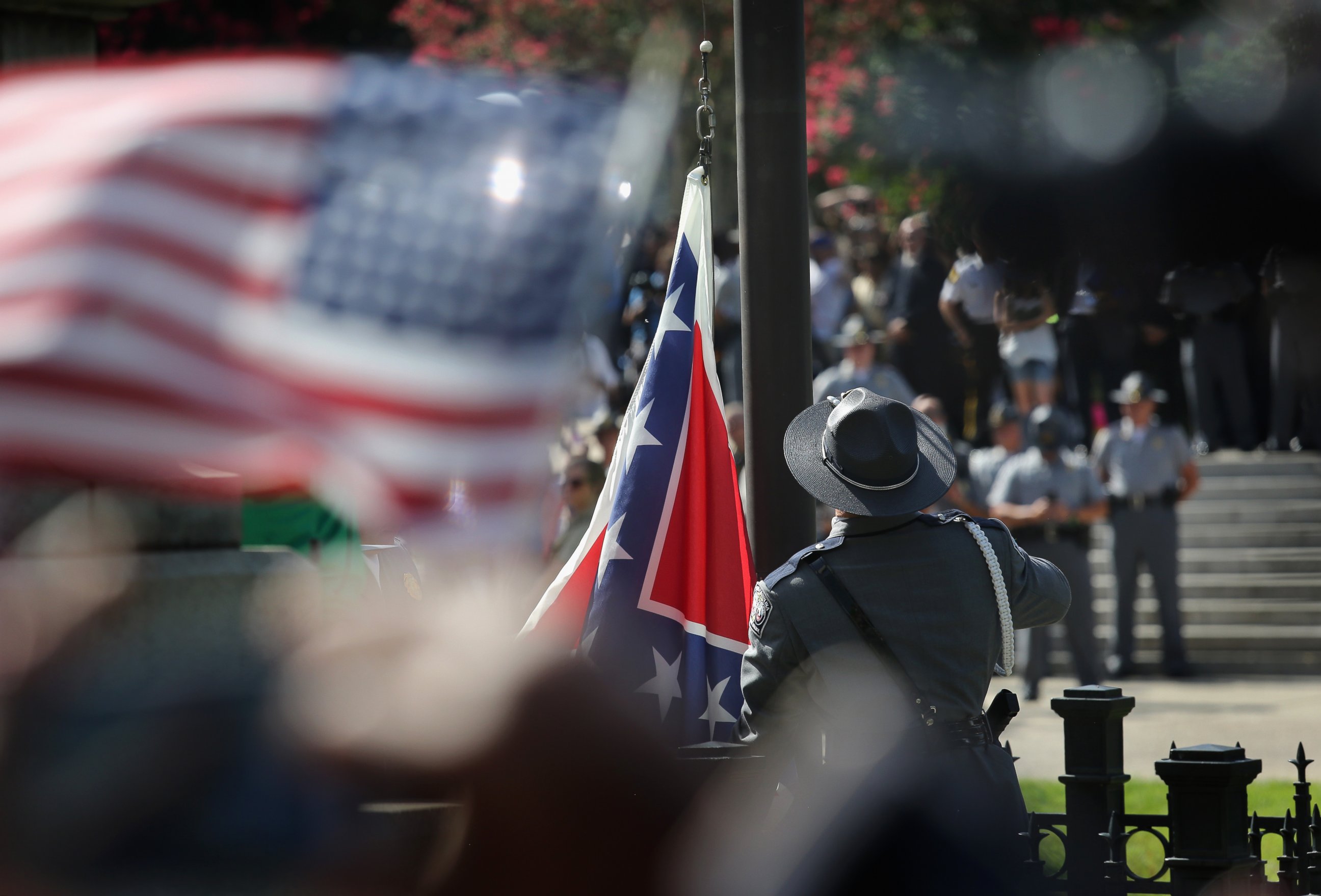
But the action did not end the debate.
Two years later, on July 10, 2017, members of the South Carolina Secessionist Party raised the flag on a temporary pole at the capitol again, and said they would fly the flag each July 10, according to The Associated Press. About 50 Confederate flag supporters had to be separated from protesters, AP said.
New Orleans, Louisiana
Following a 2015 City Council vote, New Orleans' four Confederate monuments were removed.
The City Council vote was on a proposal by Mayor Mitch Landrieu, who also cited the June 2015 Charleston church shooting.
The last monument removed was the statue of Confederate general Robert E. Lee that towered over the center of what was commonly called Lee Circle along St. Charles Avenue. The removal on May 19, 2017, was met with cheers from an attending crowd.
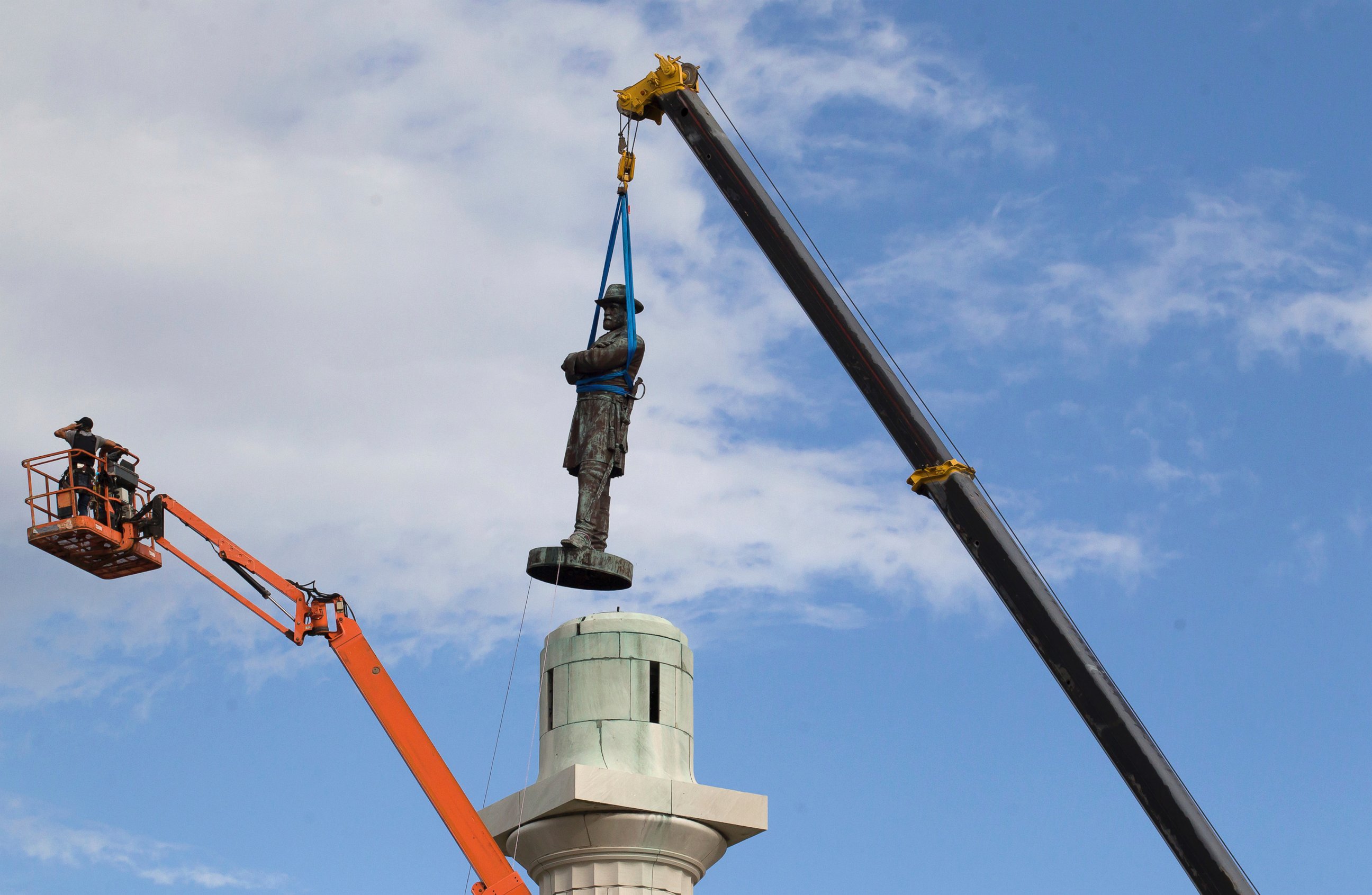
But city officials said they faced "intimidation, threats and violence" amid the efforts to dismantle the monuments, and protesters in the city clashed with those who supported keeping the monuments on display, AP said, and supporters of the statues sued repeatedly to keep the monuments in place.
St. Louis, Missouri
A Confederate monument in a St. Louis park was removed in June, 2017. In the weeks leading up to the removal, it was the site of protests.
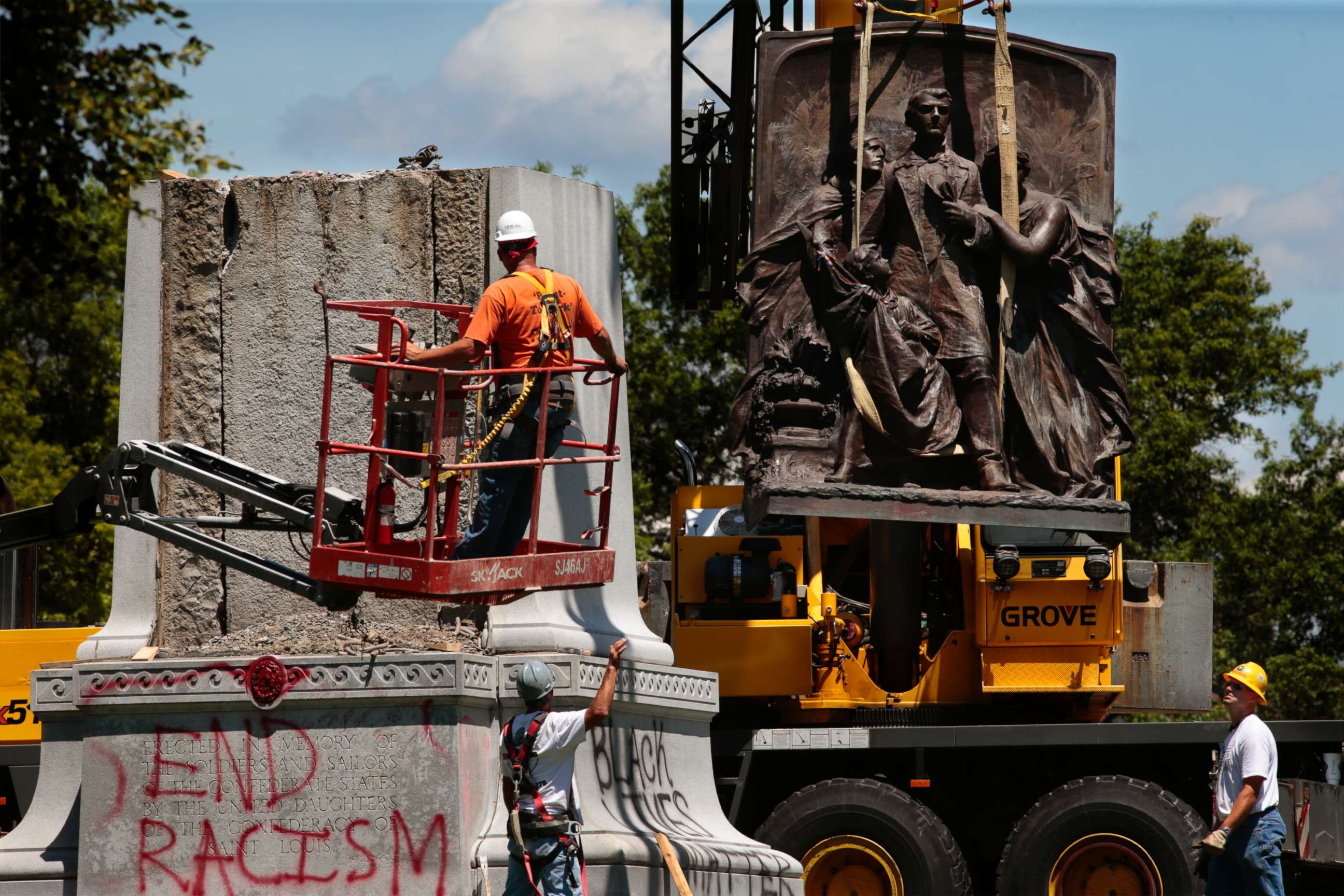
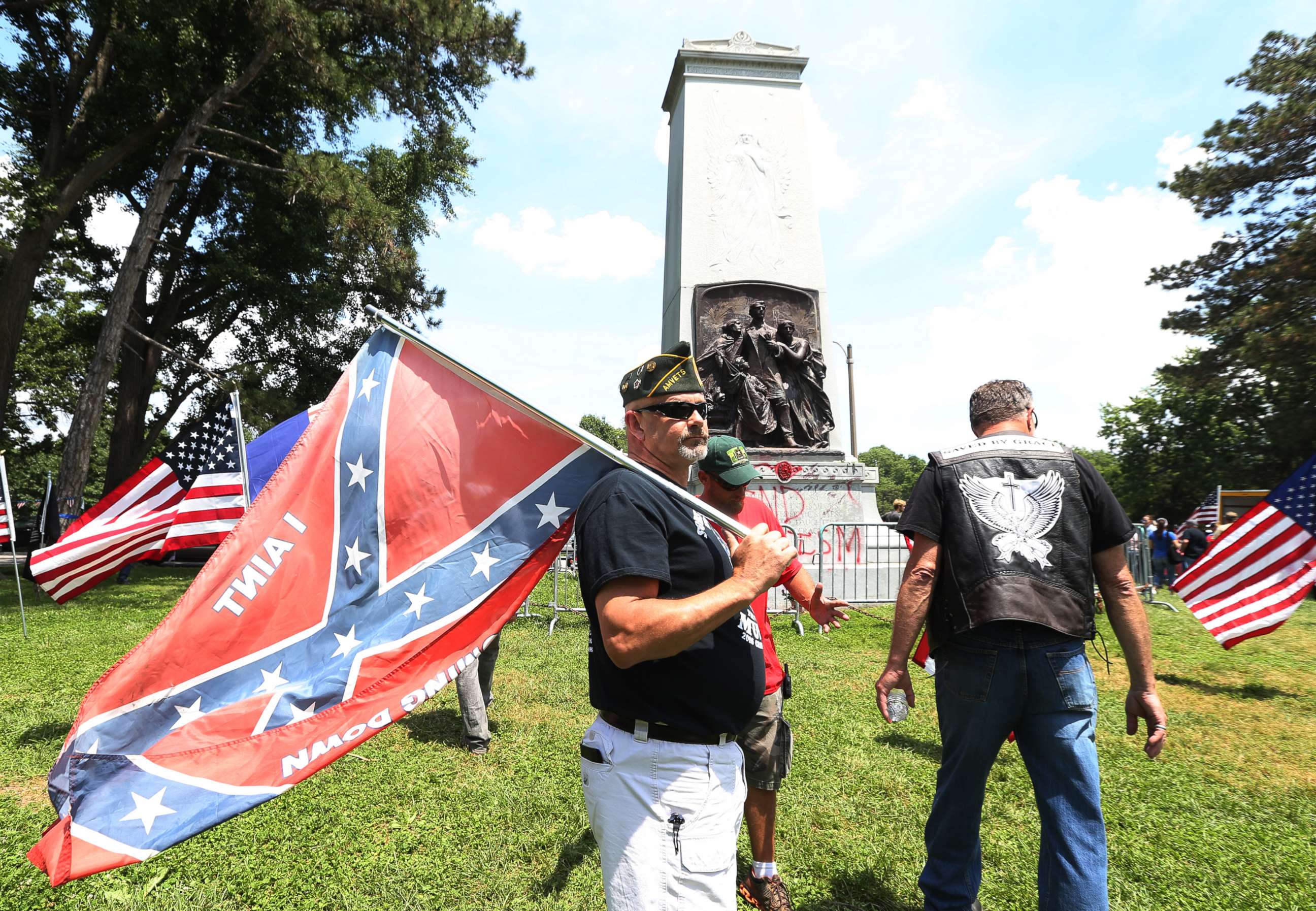
The monument, which AP said was the source of an ownership rights battle, showed a Confederate soldier leaving his family for the Civil War with an angel hovering above them.
After black teenager Michael Brown was killed by police in nearby Ferguson, Missouri, in 2014, AP reported that the monument had been spray-painted with messages including "Black Lives Matter" and "End Racism."
Charlottesville, Virginia
Charlottesville's plan to remove a statue of Robert E. Lee from a local park became the center of the deadly incident on August 12, 2017.
The plan to remove the statue was protested by white nationalists, including neo-Nazis, skinheads and Ku Klux Klan members, who formed a Unite the Right rally in Charlottesville. The proponents of keeping the statue were met in the college town by hundreds of counter-protesters, which led to street brawls and violent clashes.
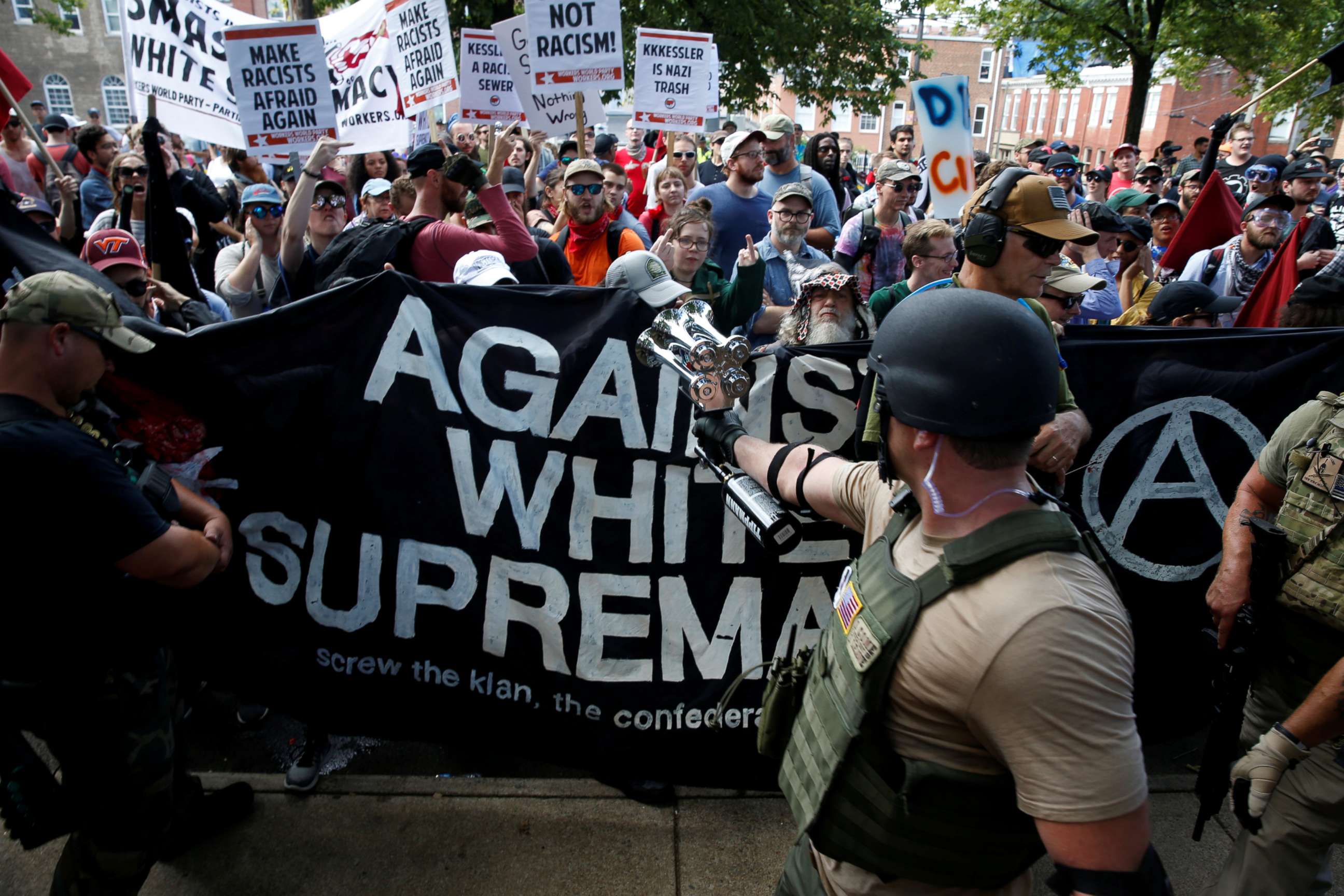
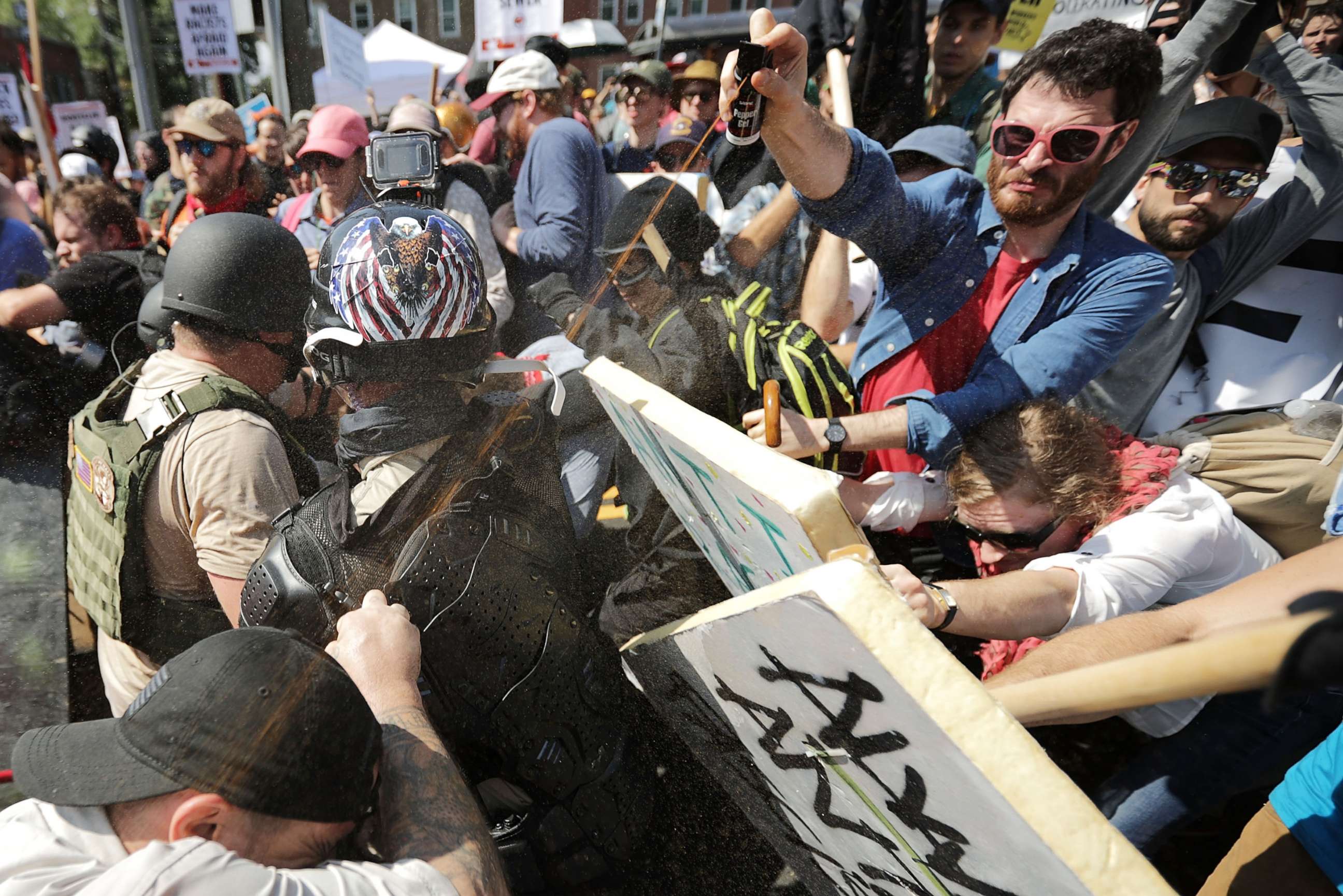
A driver plowed into a group of people who were protesting the white nationalists, killing one and injuring many others. The suspected driver is in custody and facing charges.
Two Virginia State Troopers helping with the response to the clashes also died that day in a helicopter crash.
Durham, North Carolina
Two days after the Charlottesville violence, activists and protesters who attended a rally in Durham to coax officials to remove a Confederate soldier statue that's been in front of the city's courthouse since 1924 decided to remove it themselves.
During the rally on August 14, 2017, protesters surrounded the base of the statue, which depicts a Confederate soldier wielding a muzzle rifle and lugging a canteen and bedroll and is dedicated "in memory of the boys who wore gray."
Some protesters used a ladder and looped a rope around the statue before yanking the soldier from its concrete perch.
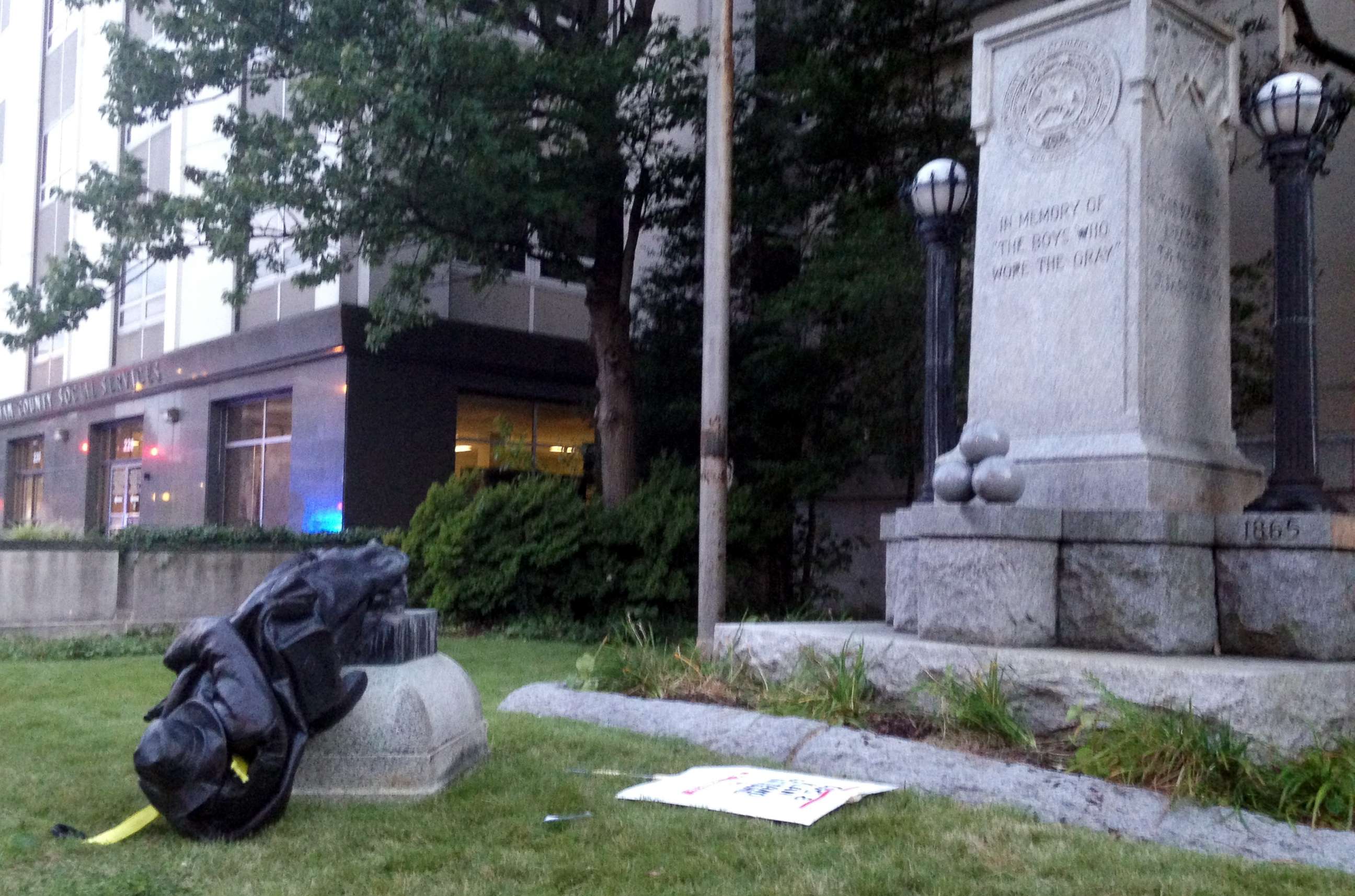
While dragging it to the ground, the angry demonstrators stomped on the statue repeatedly.
The Durham County Sheriff said his office will seek charges against those who pulled down the statue.
A renewed push to remove Confederate symbols
The violence in Charlottesville has put a new spotlight on Confederate symbols around the nation.
According to AP, Baltimore Mayor Catherine Pugh said Monday that statues of Robert E. Lee and Confederate general Thomas "Stonewall" Jackson would be removed, as well as a statue of Roger Taney, who wrote the 1856 Supreme Court ruling that denied citizenship to African Americans.
Pugh initially said the monuments would be moved to cemeteries, but hours later the city council voted unanimously to have the statues destroyed, AP said.
In New York, a member of Congress and the Brooklyn Borough President are renewing their calls for the names of Brooklyn streets General Lee Avenue and Stonewall Jackson Way to be changed, according to the Brooklyn Daily Eagle.
And in Kentucky, a rally is expected Wednesday to call for the removal of a statue of Confederate President Jefferson Davis at the Capitol, the Courier Journal reported.
The state's governor, Matt Bevin, condemned the recent violence in an interview today with WVHU radio today, but added that he "absolutely" disagrees with removing Confederate symbols and monuments from government property, according to AP, calling it the "sanitization of history."
The Associated Press contributed to this report.
ABC News' Lindsey Jacobson, Meghan Keneally, Donald Pearsall and Matthew Nestel contributed to this report




